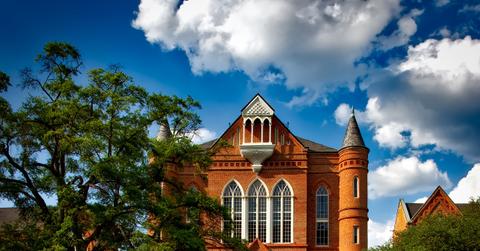Harvard Turns Prewar Home Into Green Building That Makes More Energy Than It Uses
Buildings account for almost half of all energy consumption in the United States. But Harvard's HouseZero project seeks to change all that, by retrofitting a pre-war home in Cambridge into a building that makes more energy than it uses.
Updated May 24 2019, 4:07 a.m. ET
It’s one thing to build a brand-new house that’s energy efficient, runs on renewables, and is equipped with smart technology for heating, cooling, and minimizing its carbon footprint. But most of us don’t have that luxury. Retrofitting an older house to have a minimal footprint is a bit trickier. Yet that’s just what the ambitious “HouseZero” project aims to do, and then some.
The Harvard Center for Green Buildings and Cities (CGBC) at the Harvard University Graduate School of Design (GSD) plans to convert a pre-war, stick-built house in Cambridge, Mass., into a building with a negative carbon footprint. Call it a pre-1940s, modern marvel.
Buildings are energy hogs.
Buildings account for almost half of all energy consumption in the United States. Housing comprises a quarter of that use, with property owners collectively spending more than $230 billion a year on climate control and energy at home. But, maybe for not much longer. The model HouseZero is going to be providing could change the face of energy use—and production—here and abroad. Imagine: no gas, electric, heating, or cooling bills.
Clean structures are the way of the future.
The HouseZero project allows the CGBC to create additional space for its program while also establishing a blueprint for retrofitting older homes for minimal (or zero) carbon emissions and maximum energy efficiency.
That blueprint is meant to serve as a prototype on turning an older building—specifically, a style of building so prevalent it’s repeated more than 14 million times throughout the United States—into a totally efficient, clean structure. The group’s headquarters will eventually utilize no HVAC system, zero daytime electric light use because of passive solar, and natural ventilation. And of course, it will produce all of its own energy.
“With this test case—retrofitting a house in Cambridge into a new work space—the Center for Green Buildings and Cities directly engages the ways in which we can reimagine the future of many of our cities and their utilization of resources,” said Mohsen Mostafavi, Dean of Harvard GSD and the Alexander and Victoria Wiley Professor of Design, in a CGBC release. And if that’s not enough, the CGBC aims to do all this without changing the appearance of the building.
These walls will talk.
“All components of the building are sensored to generate data that will allow the building to adjust itself and fuel CGBC research focused on actual data and simulated environments,” said professor Ali Malkawi, who is also founding director of the CGBC and creator of the HouseZero project.
Instead of an HVAC system for heating, cooling and ventilation, HouseZero will have thermal mass and a ground-source heat pump for extremely cold days. Meanwhile, a solar vent and triple-glazed windows will allow for natural airflow monitored by an automatic system tracking temperature, air quality, and even humidity levels.
HouseZero will, in fact, adjust itself throughout the day and season to accommodate desired temperatures and ventilation levels. And it won’t stop when construction ceases. The CGBC will monitor how efficient the building is, tracking progress and making adjustments going forward to make tweaks here and there, constantly improving upon the design.
Instead of excuses, HouseZero provides options.
“Before now, this level of efficiency could only be achieved in new construction,” Malkawi said in a CGBC release. “We want to demonstrate what’s possible, show how this can be replicated almost anywhere, and solve one of the world’s biggest energy problems — inefficient existing buildings.” The project is expected to take a little less than a year to complete.
